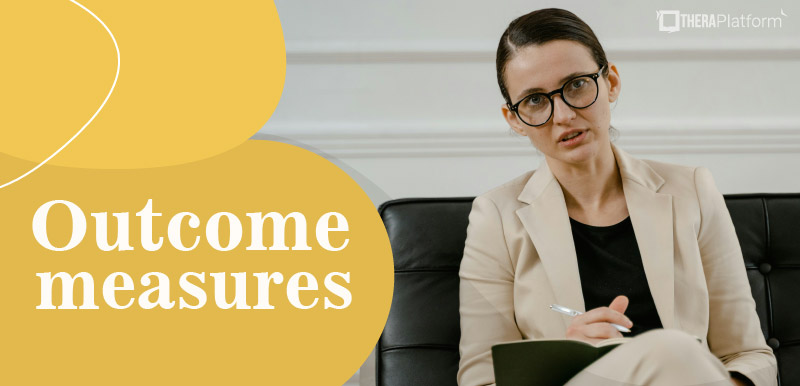Running a successful group therapy session

Group therapy is one of the most powerful types of treatment intervention. It is as effective as individual therapy for certain problems but can reach many more clients. With the need for mental health treatment rising, group therapy might provide the solution to the nation’s unmet demand. Here is what you need to know to facilitate a successful group therapy session.
Summary
- Group therapy is a highly effective treatment approach that can serve more clients than individual therapy, making it a valuable solution to the increasing demand for mental health care.
- Different types of group therapy exist, including psycho-educational, process, support, and skills training groups, each serving distinct therapeutic goals.
- A successful group therapy session requires careful preparation, including setting clear objectives, establishing rules, fostering inclusivity, and maintaining a therapeutic environment. Download Effective activities for teens worksheet.
- Effective facilitation involves balancing structure and flexibility, encouraging participation, managing conflict, and ensuring meaningful takeaways for group members between sessions. An EHR like TheraPlatform can help therapists manage documentation related to group sessions.
Streamline your practice with One EHR
- Scheduling
- Flexible notes
- Template library
- Billing & payments
- Insurance claims
- Client portal
- Telehealth
- E-fax

What is group therapy?
Group therapy is a form of psychotherapy where one (or sometimes two) therapists work with several clients on a particular issue. Some groups are more likely to have a finite number of sessions (e.g., a psycho-educational group) while others, such as a support group, might be open-ended. Although there is no set time limit for a group therapy session, it is often slightly longer than an individual session to address the needs of multiple group members.
Note: Therapists who take insurance need to keep in mind that the CPT code for family therapy (90853) is for a 45-60 minute session and they will not be reimbursed more money for meetings that last longer.
Key benefits
Group therapy has several benefits over other types of treatment:
- Universality. Universality is the concept where group members recognize that others share similar thoughts, feelings, and problems. It makes people feel understood and decreases feelings of isolation. It also helps reduce any stigma associated with mental health because clients see other people who need therapy for similar reasons.
- Different perspectives. You learn more from several people’s experiences than you can from one individual.
- Built-in peer support.
- Interpersonal abilities are heightened due to practicing those skills in a group environment.
Types of group therapy
Groups can have a variety of focus:
- Psycho-educational groups have the primary purpose of educating clients on a particular topic. For example, many substance abuse groups teach members about the impact of substance abuse to act as a deterrent for further use.
- Process groups focus on group-member interaction rather than a specific agenda. Group relationships frequently mirror real-life interactions and group members use them to work out problems that they encounter with other people in their lives. This does not mean that process groups don’t have a topic. Group members likely share a common problem.
- As the name suggests, support groups focus on providing support for a particular problem that the group members share. Alcoholics Anonymous is the most famous example of a support group.
- Skills training groups work on forming and improving certain skill sets that will aid the participants. DBT groups, for instance, concentrate on skills relevant to dialectical behavioral therapy.
Practice Management + EHR + Telehealth
Mange more in less time in your practice with TheraPlatform
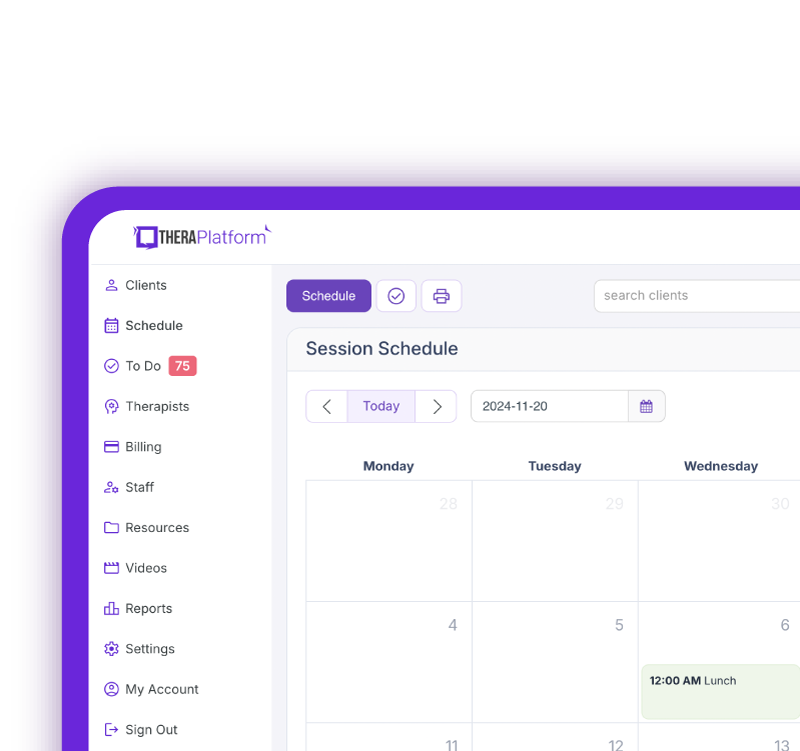
Preparing for group
Group therapy takes considerable preparation. Therapists need to think about the following:
What is the group about?
Every group has a focus, which is why clients want to participate. The members have a common problem or goal that they are working towards. Even process groups, which may not have a set agenda, have a general theme that brings their members together.
Objectives
Many groups have concrete objectives that the therapist wants to help them meet. For example, an anger management group may have a session in which the goal is for each member to identify their anger triggers.
→ Download My Free Anger Management Worksheets
Group composition
Effective groups are made up of a certain composition of members. If you have people who can’t relate to each other, it isn’t going to work. A good rule to follow is the homogeneity/heterogeneity rule. You want to ensure that there is a similarity of purpose but that the members are different enough to offer varying perspectives. For example, a grief group must have members that have experienced a similar sense of loss but you don’t want them all to have had the same life experiences.
Group size
Group size can be anywhere from 3-15 people but seven or eight people is the preferred size for maximum benefits. If you have too few people, participants don’t get enough support or feedback. If there are too many, members don’t always get a chance to contribute and it can become unmanageable.
Set an agenda
Running a group is similar to the Boy Scouts: It is best to be prepared. Create an outline for the session (even if it is loose) including check-ins, activities, potential themes, and a concluding exercise.
Free Resources for Therapists
Click below and help yourself to peer-created resources:
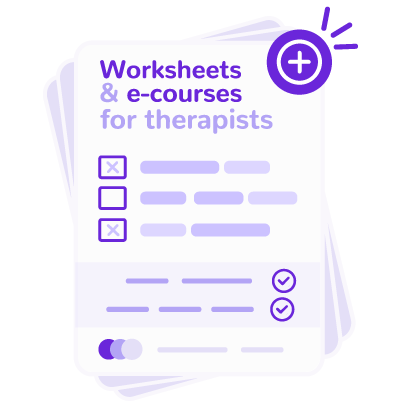
Creating a therapeutic environment
You may have heard that creating a therapeutic environment is ideal for group effectiveness. Here is how you foster an optimal atmosphere:
Implement rules
Every group needs boundaries. Without them, chaos reigns, and people don’t feel safe. The therapist will set some rules that are non-negotiable, such as maintaining confidentiality and showing respect to other group members. However, it is best to have the group members create their own rules. That way, they feel invested and are more likely to adhere to them.
Build rapport
Just like individual therapy, rapport is key to a productive group. It is a good idea to spend at least part of the first few sessions emphasizing group chemistry. Therapists can employ icebreakers to help create bonds between people. Another good way to enhance group rapport is to focus on the group’s commonalities rather than their differences.
Encourage inclusivity
One of the therapist’s main duties is to help all participants feel valued and heard. This allows them to feel secure in the group environment and vulnerable with other group members.
Checking in with all participants at the beginning of the group is a good way to give everyone a voice. Every group has its own dynamics, and therapists will have to identify those who are less likely to participate and give them opportunities to contribute.
Facilitating group
Therapists can utilize the following tips for facilitating group therapy:
Set strong boundaries
Sticking to the rules and emphasizing inclusivity and equality is paramount to success, especially in the first few sessions. This might mean making an example of a group member who breaks the rules or pushing back against someone who is attacking others. If expectations are clear from the beginning, you will have fewer problems later.
Group therapy isn’t about the therapist
The power of the group is in its members. It may be ego-boosting to talk and be the focal point, but that wastes the group process. Remember, your job is to facilitate. If you are dominating a group, you are doing a disservice to your clients.
Encourage engagement
Instead of filling awkward blank spaces, the therapist needs to encourage engagement. You can do this by asking open-ended questions, calling on people directly to share feedback, and validating contributions, which reinforces participation.
Stay focused
Staying on track is especially important for structured groups. For many groups, you only have a certain number of sessions and a lot of content to cover. It is crucial not to let the group go off on a tangent when you have topics and activities integral to the group process.
For example, if the main exercise of a social skills group session is a role-play about a common relationship difficulty, you will want to make sure the group performs it rather than talk about Super Bowl commercials.
Be flexible
At the same time, you don’t want to miss out on valuable interactions. Don’t cut off people discussing important topics just to get to your planned activity. For instance, say a highly guarded member of a substance abuse group is finally exhibiting vulnerability and revealing an emotional trigger. It would be a mistake to stop them so you can stick to your planned agenda.
Confront conflict
Groups can be exhausting to manage. You may have difficult members or a lot of people to juggle. When conflict arises, the therapist must nip it in the bud quickly before it becomes a bigger distraction. It is often useful to use the group to adjudicate disputes. This utilizes their problem-solving abilities and shows them they can cope with difficult interpersonal interactions. And when the group solves a problem together, it often carries more weight. You just want to ensure the group doesn’t pile on a particular member or give inappropriate advice.
Practice Management + EHR + Telehealth
Mange more in less time in your practice with TheraPlatform

Concluding the session (and beyond)
What happens at the end of the session and between meetings is often just as important as what occurred previously.
Summarize key takeaways
It is always a good idea to recap the main points discussed and any insights gained. Ideally, this is done by the group members with input from the therapist. If time allows, the therapist can address every client individually.
Give assignments
Even if you don’t have a specific task you want group members to complete, it is helpful to have them think about something related to a current or future session. Homework of some sort helps reinforce lessons learned and can set up discussion topics for the next meeting.
Encourage feedback
At the end of the session, ask for feedback and ideas to improve future meetings.
Post-session responsibilities
- The therapist must follow up on concerns raised during the group sessions. This may include conflicts that were too sensitive to be dealt with by the entire group. If needed, the therapist can talk to members individually.
- At times, therapists may want to consult with other professionals who treat a particular group member (with their consent, of course).
- The clinician must complete group therapy notes for each group member. It is recommended that this be done sooner rather than later since the clinician must remember what happened with multiple people.
- Plans are created for the next meeting based on treatment goals, group progress, and client feedback.
Additional tools and outcome measures to help with data collection and progress monitoring
Therapists can also take advantage of EHRs (such as TheraPlatform) that offer integrations with Wiley treatment planners and built-in outcome measures to ensure consistent data collection on progress from session to session. The best part about partnering with a modern EHR is the time you save on formulating the actual notes and scoring.
What is a Wiley Treatment Planner?
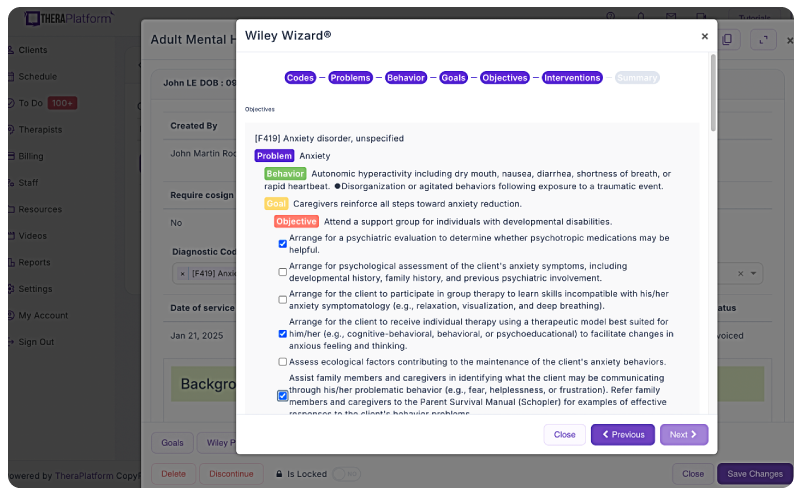
Wiley Treatment Planner is a widely used clinical resource designed to help mental health professionals and other therapists efficiently create treatment plans for their clients. In addition to treatment plans, the company also provides prewritten therapy notes for some diagnostic codes. It is part of the "PracticePlanners" series published by Wiley.
Features of Wiley Treatment Planner includes:
- Prewritten, evidence-based treatment goals, objectives, and interventions
- Treatment planners tailored to specific populations and problems, including adults, children, adolescents, couples, families, addictions, and more
- Alignment with the diagnostic criteria from the DSM-5 and ICD-10
- Prewritten therapy notes
Is there an online version of Wiley Treatment Planner and how can I get the Wiley Treatment Planner?
Wiley Treatment Planner company partnered with a select number of EHRs for mental health providers to make treatment planners available online. TheraPlatform’s EHR offers the Wiley Treatment Planner as an add-on for both assessment and treatment plans and therapy notes, such as notes. You can edit prewritten notes and add your own with any therapy template on TheraPlatform.
Watch this video to learn about Wiley Treatment Planner
→ Start My Free Trial Now
Save time with automatically scored outcome measures
Mental health therapists can use outcome measures to document progress, track a variety of key clinical indicators, helping providers make data-driven decisions, improve communication with clients, and improve client outcomes. Additionally, outcome measures help therapists adhere to compliance requirements and provide documentation needed to support reimbursement.
While outcome measures clearly provide benefits to both clients and therapists, they can be time-consuming, especially if clinicians score responses manually.
However, many aspects of outcome measures can be automated through an EHR like TheraPlatform:
- Sending measurements: Common assessments such as the PHQ-9 or GAD-7 can be automatically sent to clients and stored in their records or they can be scheduled on regular intervals.
- Auto scoring: TheraPlatfrom automatically scores and sums totals for common outcome measures.
- Report building and analysis: Results can be analyzed over time, with visual charts showing progress on rates of severity and session-to-session progress.
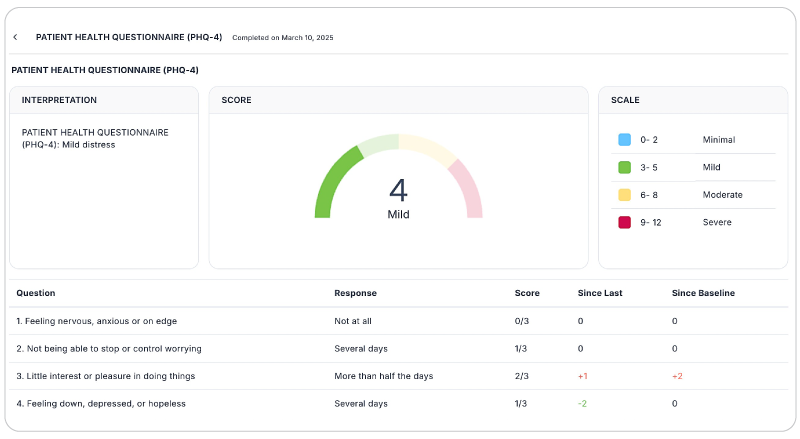
By regularly using these measures, therapists can gain valuable insights, tailor interventions, and improve client outcomes while demonstrating the effectiveness of their care without manual entry.
Streamline your practice with One EHR
- Scheduling
- Flexible notes
- Template library
- Billing & payments
- Insurance claims
- Client portal
- Telehealth
- E-fax

Resources
Theraplatform is an all-in-one EHR, practice management and teletherapy solution that allows you to focus more on patient care. With a 30-day free trial, you have the opportunity to experience Theraplatform for yourself with no credit card required. Cancel anytime. They also support different industries including mental and behavioral health therapists in group practices and solo practices.
More resources
- Therapy resources and worksheets
- Therapy private practice courses
- Ultimate teletherapy ebook
- The Ultimate Insurance Billing Guide for Therapists
- The Ultimate Guide to Starting a Private Therapy Practice
- Mental health credentialing
- Insurance billing 101
- Practice management tools
- Behavioral Health tools
Free video classes
- Free on-demand insurance billing for therapist course
- Free mini video lessons to enhance your private practice
- 9 Admin tasks to automate in your private practice
References
American Group Psychotherapy Association. Practice guidelines for group psychotherapy.
Novotney, A. (2019, April 1). Keys to great group therapy. Monitor on Psychology, 50(4). https://www.apa.org/monitor/2019/04/group-therapy
Rosendahl, J., Alldredge, C. T., Burlingame, G. M., & Strauss, B. (2021). Recent Developments in Group Psychotherapy Research. American Journal of Psychotherapy, 74(2), 52–59. https://doi.org/10.1176/appi.psychotherapy.20200031
FAQs on how to run a successful group therapy session
What makes group therapy effective?
Group therapy allows clients to connect through shared experiences, build interpersonal skills, and gain diverse perspectives — all within a supportive environment. Universality and peer feedback often reduce isolation and enhance progress.
How can therapists prepare for a successful group session?
Therapists should define clear objectives, set ground rules, and choose participants with shared goals but diverse perspectives. Preparation also includes planning agendas, fostering inclusivity, and maintaining confidentiality.
What tools can help therapists manage group therapy sessions?
An all-in-one EHR like TheraPlatform simplifies scheduling, note-taking, billing, and telehealth for group sessions. It also integrates with Wiley Treatment Planners and automates outcome measure scoring to save time and support data-driven care.


